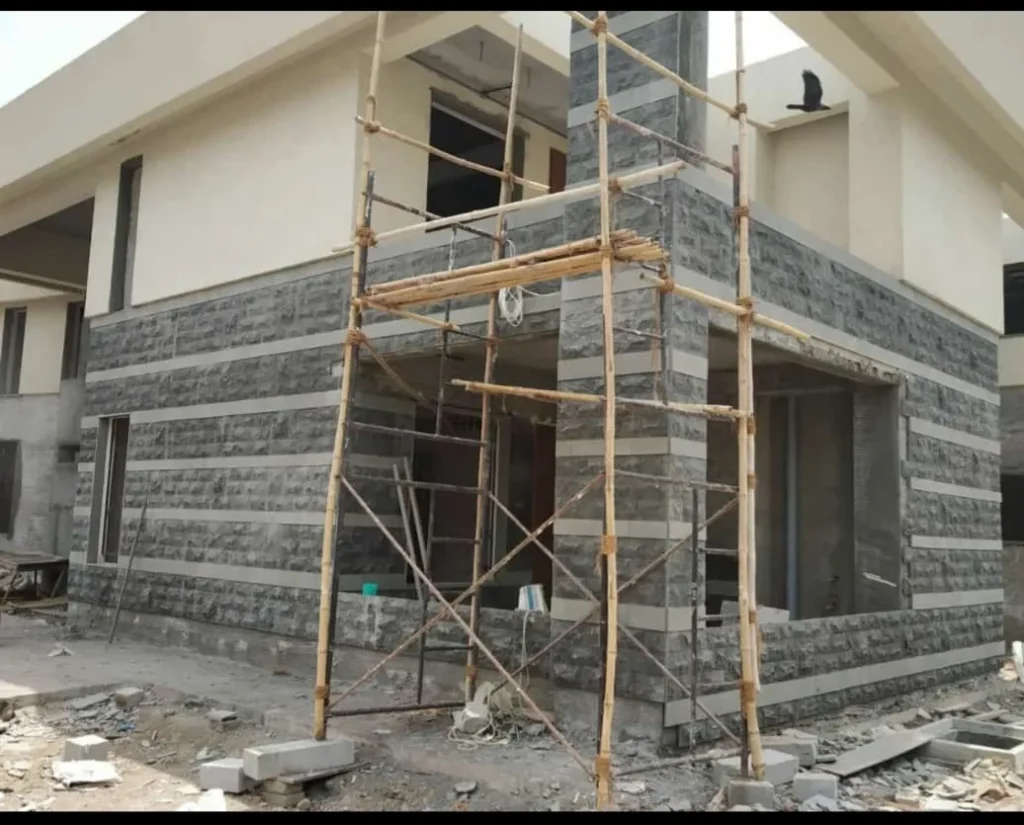Basalt Stone Cladding: The Modern Architectural Marvel
The modern architectural scene is characterized by a blend of innovation, functionality, and aesthetics. And among the myriad materials architects and designers employ, basalt stone cladding emerges as an increasingly popular choice. Let’s delve into this world of basalt and discover the reasons for its growing adoption in construction and design.
What is Basalt?
Basalt is an igneous rock formed from the rapid cooling of lava exposed at or very near the surface of the earth. It has a fine-grained texture, primarily due to the speedy cooling process. The rock is predominantly composed of plagioclase and pyroxene minerals and is most commonly found in oceanic crust.
Why Basalt Stone Cladding?
Aesthetic Versatility: The inherent beauty of basalt lies in its rich, deep, and uniform color that resonates with an earthy charm. Its minimalistic and elegant appearance complements both traditional and contemporary architectural styles.
Durability: As a stone, basalt is remarkably durable. Its natural hardness ensures resistance against abrasions, scratches, and the elements. This resilience makes it an excellent choice for exteriors subjected to harsh climatic conditions.
Thermal Comfort: Basalt stone has good thermal properties, allowing it to act as a natural insulator. Structures clad in basalt can maintain more stable internal temperatures, resulting in energy savings.
Eco-friendly: With a focus on sustainable architecture, using natural materials like basalt reduces the carbon footprint of a building. Moreover, basalt stone cladding doesn’t emit volatile organic compounds (VOCs), which often contribute to indoor air pollution.
Ease of Maintenance: The non-porous nature of basalt means it doesn’t easily harbor bacteria or mold, making it a hygienic choice. Furthermore, cleaning is straightforward, usually requiring just mild detergent and water.
Basalt Stone Cladding
Exterior Facades: Being resistant to weather, UV rays, and pollution, basalt is a great choice for exterior cladding. It provides buildings with a modern, sleek appearance and a protective barrier against the elements.
Interior Walls: For spaces that need a touch of sophistication and warmth, basalt stone walls serve as perfect backdrops. Whether it’s a living room, bathroom, or commercial space like a lobby, basalt stone can transform the ambiance.
Fireplaces: Given its origin, it’s no surprise that basalt can withstand high temperatures, making it ideal for fireplace cladding.
Water Features: Basalt’s resistance to water and its natural look makes it a popular choice for water features, both indoor and outdoor.
Installation and Care:
While basalt cladding offers many benefits, it’s crucial to ensure proper installation. It’s advisable to:
- Use experienced professionals familiar with stone cladding techniques.
- Seal the basalt surface to further enhance its resistance to stains and moisture.
- For cleaning, avoid acidic or abrasive cleaners; a gentle soap and water mixture will suffice.
Conclusion:
In the realm of architectural design, where both functionality and aesthetics are paramount, basalt stone cladding offers a harmonious blend. Its versatility in application and the array of benefits, from thermal insulation to durability, make it a material poised for continued growth in popularity. Whether you’re a homeowner looking for a modern touch or an architect aiming for sustainable design, basalt stone cladding provides a solution that’s as sturdy as the rock it stems from.




Basalt Stone Wall Cladding
Basalt, a volcanic igneous rock, has been used for centuries in construction due to its durability, resistance, and attractive appearance. In modern times, one of the innovative uses of basalt is for wall cladding purposes, both for interiors and exteriors. Here’s an overview of basalt stone wall cladding:
Introduction to Basalt:
- Basalt is a dense, hard rock formed from the rapid cooling of magma at the Earth’s surface.
- Its color palette is mostly grey to black, but some variations can have a subtle green or bluish tint.
2.Why Choose Basalt for Wall Cladding?
Strength and Durability: Basalt is highly durable and resistant to various environmental factors.
Thermal Properties: Its natural insulating capabilities mean that it aids in maintaining temperature stability in a structure.
Aesthetic Appeal: The natural texture and color of basalt can give a unique and sophisticated look.
Easy Maintenance: Once sealed, basalt requires minimal upkeep.
Eco-Friendly: Being a natural stone, it doesn’t emit volatile organic compounds (VOCs) and is fully recyclable.
Applications:
- Exteriors: Basalt cladding can be used for exterior facades of buildings, garden walls, and pool surroundings.
- Interiors: Feature walls, fireplaces, and even bathrooms can be enhanced using basalt cladding.
Types of Basalt Cladding:
Honed: Provides a smooth finish and reveals the stone’s natural color and character.
Flamed: Offers a rough texture, perfect for non-slip surfaces.
Polished: Adds a sheen to the basalt surface, making it gleam and appear more luxurious.
Bush-Hammered: Creates a textured surface that is also aesthetically appealing.
Installation:
- Substrate Preparation: Ensure the wall to be clad is stable, clean, and free from any elements that might prevent adhesion.
- Method: Depending on the choice and weight of the stone, various methods like direct adhesion using mortar or mechanical fixation can be used.
- Sealing: It’s recommended to seal basalt cladding to protect it from stains and enhance its longevity.
Maintenance:
Cleaning: Use a mild detergent and soft brush to clean the surface. Avoid harsh chemicals.
Regular Inspection: Check for any damages or loose stones periodically to ensure safety and maintain the appearance.
Re-sealing: Depending on the environment and wear, re-sealing might be required every few years.
Considerations:
Cost: Basalt can be more expensive than some other cladding materials. However, its durability might make it cost-effective in the long run.
Weight: Basalt is heavy. Ensure the structure can support its weight before proceeding with installation.
Local Availability: Depending on your location, sourcing basalt might be a challenge or can influence the cost.
In conclusion, basalt stone wall cladding is a brilliant way to merge the robustness and elegance of nature into architectural designs. When applied correctly, it stands as a testament to timeless beauty and strength.

